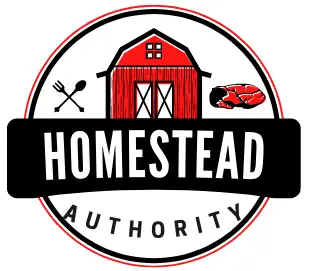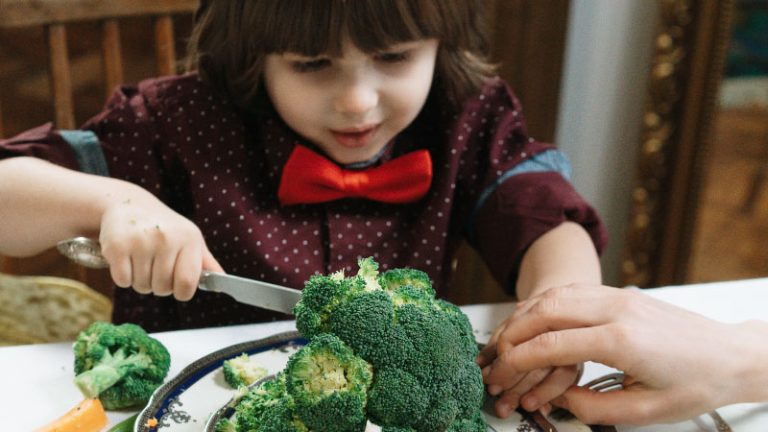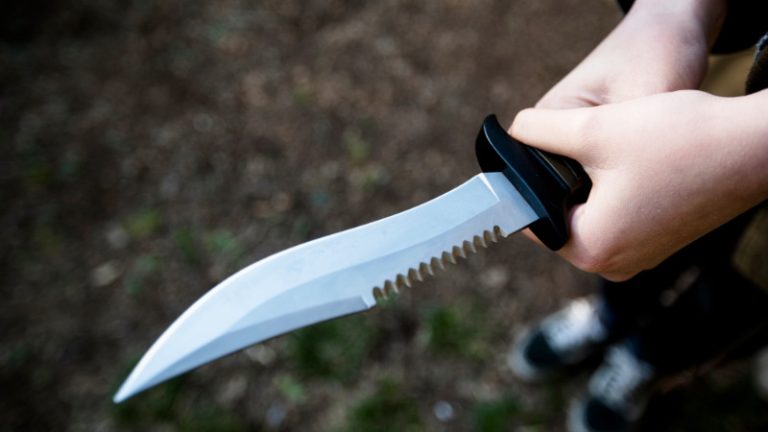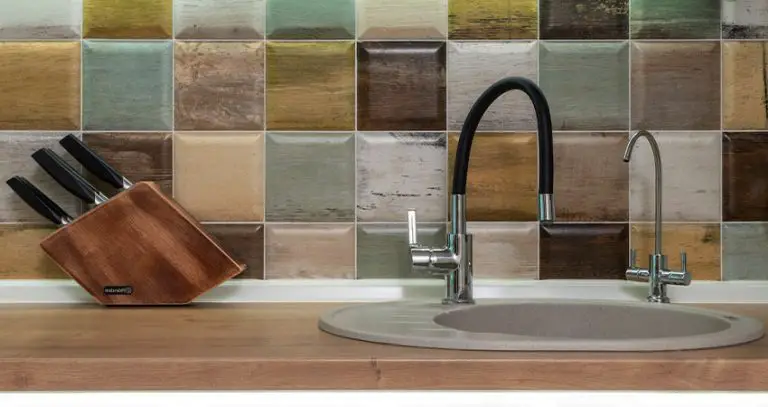Pocket Knife Safety Rules : Never Take It Lightly!
Pocket knives are handy tools that are useful for domestic household work as well as for professionals. They’re even used by cub scouts to teach about the wilderness.
However, the most common tools are the ones that cause the most accidents. We were warned about scissors as children. The same can be applied to pocket knives.
So what are some pocket knife safety rules? Some of the most basic pocket knife safety rules are – always carry a closed knife, never pass an open knife to someone else, and don’t treat a pocket knife as a toy.
These are rules of thumb and are universally taught and maintained all around the world.
In this article, we’re going to dig a little deeper and discuss some important pocket knife safety rules, as well as explain why these rules are so important to remember and practice.
Pocket Knife Safety Rules
Most people assume that since pocket knives are small, they don’t pose a risk. However, that is not the case. Rather, most domestic accidents occur from either kitchen knives or pocket knives.
This is because most people use pocket knives for household activities. Some people carry them for self-defense. And some people simply require a knife for their professional needs (electricians, plumbers), for whom a pocket knife is quite handy at times.
At the same time, children who are allowed to carry a pocket knife, such as boy Scouts, should adhere to the knife safety rules provided by BSA.
We’re going to list some pocket knife safety rules down below. These rules are basic and can help you prevent some unwanted and ugly cuts.
First Rule – Stabilize Before Cutting
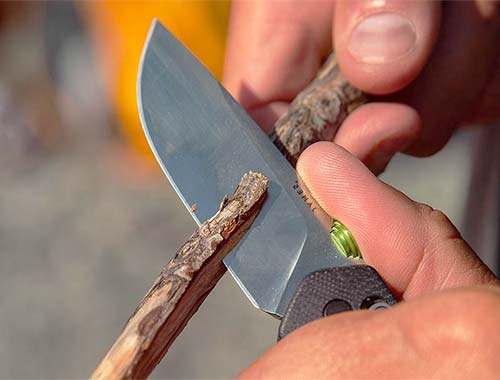
It’s very important to stabilize something before you cut or carve it. If you don’t, your hand might lose balance and you’ll end up cutting yourself instead. This is the one key reason behind many knife-related accidents.
Hold the thing you’re trying to cut/sharpen with your non-dominant hand, and keep it against a hard surface (tree trunk, table, wall).
Push the thing so that it doesn’t slip or move from your hand. Now use your dominant hand to hold your pocket knife to cut or sharpen.
Second Rule – Stabilize Your Body

Our body is most out of balance while standing. Our body’s core strength is used to maintain stability. Cutting or carving something while standing up can be difficult and outright dangerous.
This is because while standing, our body is trying to stabilize two points of gravity. This often results in slipping one’s hand and cutting oneself.
You should never be standing up while using a pocket knife. Instead, sit, crouch, or kneel – make sure your feet are touching the ground.
This has two merits.
- One, your body is stabilized while sitting down, so your center of gravity is uncompromised.
- Secondly, your hands will be steady while holding and using a pocket knife. There’s less chance of your hands slipping and cutting yourself.
Third Rule – Cut Away From The Body
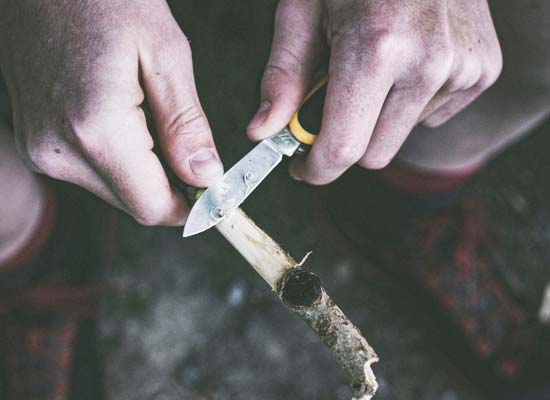
When a knife slips away from the hand, it always flies toward the direction in which it is being swung. If you turn or move a pocket knife toward your body, there’s a higher chance of the knife hitting or cutting you.
Inward swings are also more complex and require more physical strain.
While cutting, make sure that you’re making outward swings with your knife away from your body. This will lessen the chance of you cutting yourself. Keep the knife away from your body to avoid injuries.
Fourth Rule – Maintain An Arm’s Length Around You
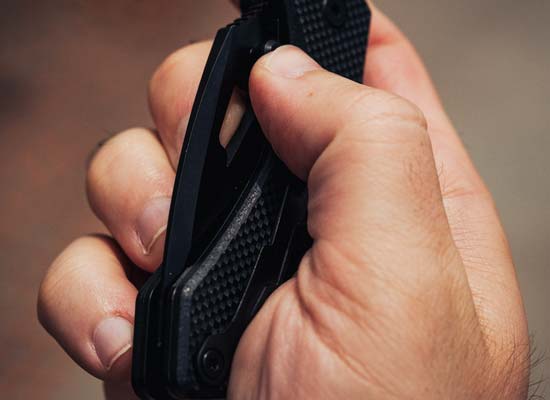
A lot of people injure not themselves but other people around them. The reason behind this is they were standing/sitting too close to others. So when the knife flies away, it flies toward other people and hurts them.
To avoid this, take your pocket knife in one hand while standing up, and stretch your arm. Now, make a circular motion and make sure no one is within arm’s length around you.
Make sure you have an overhead clearance of arm’s length as well. This is also known as the blood circle.
If someone is within this circle, ask them to move. If someone enters this space while you’re carving something, gently close the knife and put it away. If you can reach or touch someone else within this safety circle, they are not safe.
Fifth Rule – Use A Sharp Knife, Never A Blunt Knife
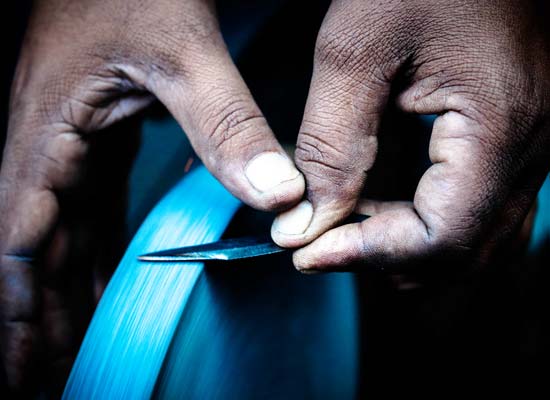
This may seem counterintuitive at first glance. How can a blunt pocket knife be a reason for caution?
As surprising as it may seem, dull knives are the reason behind a lot of ugly cuts and bruises in the workplace. But why is that?
When using a blunt or dull pocket knife, you have to apply more pressure than usual to cut through a material. If you had a sharp knife instead, you could’ve achieved the same result with much ease.
Since a dull blade requires more manual pressure, it increases the risk of hurting yourself and others around you.
Always use a sharp pocket knife. If you have a work pocket knife, remember to sharpen it regularly.
Sixth Rule – Watch Your Fingers And Face
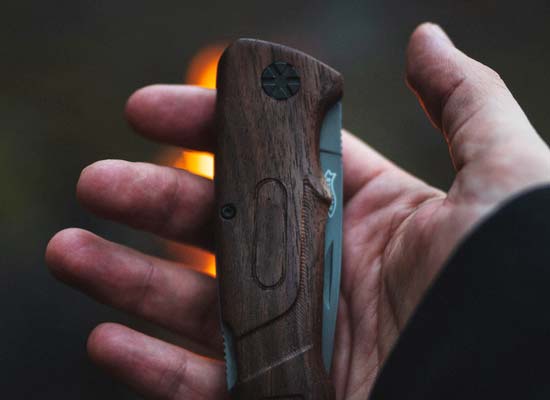
Not safely handling a tool is a sure recipe for disaster. The same can be said about a pocket knife. Apart from safely using a pocket knife, the simple task of opening and closing a knife can lead to unwanted accidents.
While opening a pocket knife with a spring mechanism, always keep the knife away from your face. Sometimes these springs malfunction and the blade can cut your face.
To safely open a knife, keep it arm’s length away from your face. Use one hand to securely grip the handle and the other hand to open the knife slowly.
The same goes for your fingers. While closing a pocket knife, make sure none of your fingers are in the way between the blade and the sheath. Keeping your fingers away will prevent you from cutting or pinching while closing a knife.
Seventh Rule – Keep Your Knife Closed And Well Maintained

This is one of the most basic rules while carrying any tool or weapon. When you’re done using a pocket knife, close it and put it away. Never pass an open knife to someone else.
And if your pocket knife is wet, dry it first, then put it in a safe pouch or your pocket. Leaving a pocket knife open is never a good idea and can lead to some ugly accidents.
At the same time, practice maintenance with your pocket knife. Frequently check if the screws or the hinge are tight enough or not. If they’re loose, keep them tightened. A loose pocket knife can malfunction, and you and anyone around you.
Last but not the least, you should adhere to the knife laws that are enacted by your state or local government.
According to the knife laws of the United States federal government, it is illegal in most states to conceal carry a pocket knife. It is also illegal to carry knives in certain places such as schools, courts, or airports.
Not following these laws might land you swiftly in jail.
FAQ
Here are some common questions about pocket knife safety rules that people have asked on the internet.
How do I make a blood circle?
To make a blood circle, stand up still and hold out your hand with the knife. Now make a 360-degree rotation around you. Make sure no one is inside this circle. This is known as a blood circle, as it saves anyone from accidentally being cut by being too close to you.
How to hold a folding knife?
To hold a folding knife, put your hand on the back of the handle. Never put your hand on the opening end of the knife, as that can lead to accidental cuts.
How to close a pocket knife?
To close a pocket knife, find the blunt edge of the knife. Now, hold one side of the blade with your thumb, and the other side with your index finger. Hold the blade firmly, and push it towards the closing gap of the handle.
How do I close a pocket knife with a button lock?
To close a pocket knife with a button lock, hold the knife with your dominant hand. Now press down on the locking button to keep the closing gap open. With your non-dominant hand, push the blunt edge of the knife to close the knife.
Final Words
In this article, we’ve given you an overall idea about why pocket knife safety rules are important and what might happen should you choose to ignore them! Remember that any knife, no matter how big or small, is still a tool for cutting and sharpening. Any mishandling of even a small knife, such as a pocket knife, can lead to serious injuries.
Self-handling of these rules will keep you and the people around you safe. Carefully maintaining a pocket knife can also increase its lifespan and usability. We hope this article was useful. Thanks for reading.
